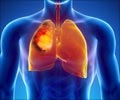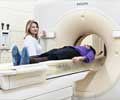A new study published in the New England Journal of Medicine finds that certain factors can predict the chances of a lung nodule detected on CT scan during screening of being cancerous.
CT scans used for screening lung cancer in high-risk patients sometimes detect the presence of small lung nodules. However, these nodules may not always mean cancer, and have to be investigated further. A recent study tried to establish factors that could be associated with the probability of a nodule detected on low-dose CT scan to be cancerous.The study was conducted in patients enrolled in the multicenter Pan-Canadian Early Detection of Lung Cancer Study (PanCan) and in chemoprevention trials conducted by the British Columbia Cancer Agency (BCCA). The participants were between 50 and 75 years of age and were smokers, either in the present or in the past. Thus, these patients were at a higher risk for lung cancer. The patients were given a questionnaire and a spirometry test to study the lung function was performed.
Low-dose CT scans were performed on the patients and the presence of nodules or other abnormalities suggestive of cancer were noted. Patients with a noncalcified lung nodule were followed with repeat CT scan a few months later till it could be established whether the nodules were benign or malignant. The presence of lung cancer was confirmed based on the results of biopsy of the nodule. The patients were followed up for a period of 2 years.
In the PanCan patients, around 5.5% of the total number of patients with nodules detected on the screening turned out to be suffering from cancer. In the BCCA study, 3.7% patients among the patients with nodules had cancer.
The study evaluated certain variations that could make it more likely for the nodules detected on the CT scan to be malignant. These included the size, type, number and location of the nodules, and the presence of speculation (spike-like appearance).
The nodules in the upper lobes were more commonly cancerous than the ones in the middle or lower lobes. Nodules that were located near lung fissures were unlikely to be cancerous. Other factors that were more commonly associated with cancer were older age of the patient, female sex, presence of family history of lung cancer or emphysema in the patient. In addition, cancerous changes were also more commonly associated with larger nodules, nodules that were part-solid, and the presence of spiculation of the nodule on the scan. Patients with a lower nodule count also had higher chances of cancer.
Reference:
Source-Medindia














